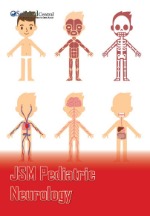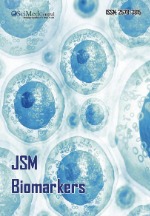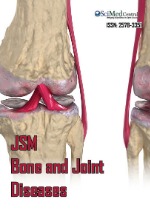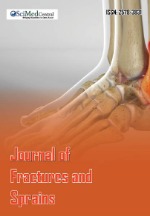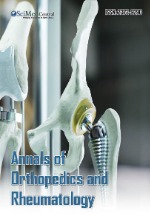3D Bioprinting in Tissue Engineering: Advancements, Challenges, and Pathways to Clinical Translation
- 1. Department of Tissue Engineering and Regenerative Medicine FH Technikum Wien, Austria
- 2. Department of Industrial Chemistry, Madonna University, Nigeria
- 3. Department of Pharmacology and Therapeutics, Delta State University, Nigeria
KEYWORDS
- 3D bioprinting; Tissue engineering; Regenerative medicine; Bioinks; Clinical translation; Vascularization; Additive manufacturing; Organ transplantation; Personalized medicine; Bioprinted tissues; Extrusion bioprinting; Neural tissue engineering; Biomaterials; Drug testing platforms; Artificial intelligence in bioprinting
CITATION
Eghosasere E, Osasumwen E, Emmanuella O (2025) 3D Bioprinting in Tissue Engineering: Advancements, Challenges, and Pathways to Clini- cal Translation. JSM Regen Med Bio Eng 7(1): 1023.
INTRODUCTION
In recent times 3D printing has become a very important aspect of technology in tissue engineering [1]. Tissue engineering is a multidisciplinary field that combines principles of biology, engineering, and materials science to develop functional and efficient substitutes for damaged or diseased tissues [2]. One of the key challenges that tissue engineering aims to address, includes recreating the complex architecture of native tissues, ensuring proper vascularization, and achieving functional integration with the host tissue [3]. With the development of 3D bioprinting technology the fabrication of complex and precise tissue scaffolds and constructs are produced by stacking materials layer by layer [4]. 3D Bioprinting sometimes also known as additive manufacturing involves the layer- by-layer deposition of bioinks (materials containing living cells) to fabricate complex, tissue-like structures by using several materials like ceramics, metals and polymers in the fabrication process of complex structures [5].
The use of 3D Bioprinting technology allows for precise control over the mechanical properties of the materials to match the standard of the tissue standard [6]. With this technology, scientist have been able to produce precise scaffolds with optimal porosity that resembles the native tissue of tissue of interest in order to efficient cell infiltration throughout the scaffold, facilitation the diffusion of nutrients and oxygen to cells within the scaffold and promote vascularization, which is crucial for the survival of larger engineered tissues [2].
The invention of stereolithography by Charles Hull in 1984 set the pace for the concept of 3D printing [7]. The invention of this technology laid down the foundation of its application in various fields including Bioprinting. However, it was not until the 1990s that the idea of using this technology for biological applications started to get more attention. In 1996 scientists like Thomas Boland started exploring the use of ink jet printers for biological applications [8]. In the early 2000s he demonstrated the use of modified inkjet printers to print cells using a bio ink solution that contains living cells [9]. In the year 2002, The Wake Forest Institute for Regenerative Medicine saw Dr. Anthony Atala at the helm of a groundbreaking bioprinting initiative that aimed at creating human tissues. Their focus was on printing tissue for organ transplantation and was one of the earliest endeavors to investigate the practical use of bioprinting in medicine [10]. Recent developments in the area of 3D bioprinting have focused on research involved in printing an entire organ. While this seems to be the long-term plan there is also ongoing work in printing smaller, simpler tissues for more immediate applications, such as skin grafts, cartilage, and bone [11].
Recent advances in 3D bioprinting have considerably increased its usage in tissue engineering, particularly with the introduction of novel bioinks that improve tissue formation and cell viability, such as exosomes and decellularized extracellular matrix (dECM) [12]. Vascularised tissues that are nearly ten times thicker than previously constructed structures can now be formed thanks to advances in vascularization techniques developed at the Wyss Institute. Graphene and other 2D nanomaterials have been added to bioprinted objects to improve their functioning [13]. Furthermore, cutting-edge techniques such as organ-on-a-chip technologies, best represented by the first fully 3D-printed heart-on-a-chip with integrated soft strain sensors, highlight the promise for complex microphysiological devices [14]. Recent advancements in bioprinting specific tissues, such as corneal, bone, cartilage, and cardiac structures, highlight the method’s adaptability [15]. There are still obstacles, such as ethical concerns and technological limitations, that preclude clinical acceptance. The use of 3D bioprinting for in vitro models in drug testing and sickness modelling is growing in popularity as the area matures, showing its interdisciplinary nature, which encompasses computer modelling, biology, engineering, and material science. These advancements illustrate the importance and potential of 3D bioprinting in the field of regenerative medicine and tissue engineering [16].
With the advancement of 3D bioprinting technology, the design of precise, patient-specific tissue constructs and scaffolds is enabled. It provides tissue engineers with precise control over the scaffold design and fabrication in different scales and sizes. This enables the production of patent specific constructs that can mimic the complex architecture and environment of native tissues [17]. Figure 1 summarises the evolution and applications of 3D Bioprinting.
Figure 1: Overview of 3D Bioprinting. (A) Timeline of key milestones in 3D bioprinting development. (B) Essential components of a 3D bioprinting system. (C) Applications of 3D bioprinting in tissue engineering, including the creation of skin grafts, cartilage, bone, vascularized tissues, and organon-a-chip models.
As breakthroughs in 3D bioprinting continue to be hindered by significant limitations, there is a growing need for research that explores novel and effective strategies to advance the clinical translation of this technology (Murphy, De Coppi and Atala, 2019). This review aims to provide a comprehensive understanding of the current progress in 3D bioprinting, its potential clinical applications, and the obstacles that impede its widespread implementation in medical settings. By identifying these key challenges and outlining future research directions, the review seeks to contribute meaningfully to the ongoing discourse on overcoming barriers and facilitating the successful integration of 3D bioprinting into clinical practice.
METHODOLOGY
This review adopts a systematic approach to identify relevant studies, articles, and reports on the application of 3D bioprinting in tissue engineering and regenerative medicine. A comprehensive search was conducted across the following databases: Web of Science, IEEE Xplore, PubMed, Google Scholar, and Scopus. To guarantee that the most recent findings in the field were included, the search period encompassed studies released between January 2020 and June 2024. Some of the combinations of search phrases that were found were “3D bioprinting,” “tissue engineering,” “regenerative medicine,” “bioprinted tissues,” “biomaterials,” “stem cells,” and “organ printing.”
Inclusion and Exclusion Criteria
Studies that met the following criteria was taken into consideration for this review: (1) it had to be published in peer-reviewed journals; (2) it had to look at how chronic conditions, such as tissue degeneration or inflammation, impact treatment outcomes; (3) it had to be available in English; and (4) it had to focus on the application of 3D bioprinting in tissue engineering and regenerative medicine, specifically in relation to developing patient- specific treatments. Excluded were studies that (1) focused only on preclinical or basic science research with no clear clinical relevance, (2) did not specifically address the connection between tissue engineering, 3D bioprinting, and chronic comorbidities, or (3) lacked trustworthy methodologies or yielded ambiguous results.
Data Extraction and Synthesis
To give a comprehensive overview of the current state of research on the application of 3D bioprinting in tissue engineering and regenerative medicine, the data from the selected articles was gathered and combined. Key data collected included the study design, bioprinting techniques, tissue types addressed, chronic illnesses or degenerative variables considered, tissue regeneration, and clinical translation outcomes. Next, recurring patterns, gaps in the literature, and potential research areas were identified by analysing the synthesised data [18].
Quality Assessment
The quality of the included studies was evaluated based on criteria suited for narrative reviews, emphasizing the clarity of research objectives, the robustness of methodologies, the relevance of the findings to tissue engineering applications, and the study’s contribution to the broader field of regenerative medicine. Studies were categorized according to their level of evidence, and those with considerable methodological shortcomings were addressed with caution.
Narrative Synthesis
The findings from the studies selected were compiled in a narrative style with an emphasis on the use of 3D bioprinting in tissue engineering, specifically with regard to customised tissue regeneration techniques. As part of the synthesis, the results were arranged thematically into sections on topics such scaffold design, bioprinting technology improvements, and the combination of bioprinting and regenerative medicine techniques. The review also recommended future research directions and emphasised the findings’ originality and possible clinical significance.
3D BIOPRINTING PROCESS
3D Bioprinting involves 3 main stages which will be covered in this review. The three main steps in the intricate process of 3D bioprinting are pre-bioprinting, bioprinting, and post-bioprinting [19]. Researchers must select the appropriate cells and bioink elements to create a good bioink that combines cells, nutrition, and matrix components. They then produce a 3D digital design that is transformed into a printable file format utilising imaging techniques like CT or MRI scans [20]. The bioink is inserted into the printer cartridge and deposited layer by layer during the bioprinting process using several technologies, including extrusion, inkjet, and laser-assisted bioprinting. After that, the printed structures undergo post-bioprinting processes include incubation to provide stability and promote tissue growth and mechanical testing to assess integrity [21].
Pre-Bioprinting Stage
The pre-bioprinting stage is a very critical step because it determines the structure, composition, and potential functionality of the bioprinted construct [22]. This stage involves the design process. It begins with creating a digital 3D model of the desired tissue structure which can be done by either Computer-aided design (CAD) software, a 3D scanning of existing tissues, or medical imaging data (e.g., CT or MRI scans). The digital model serves as a blueprint for the bioprinter to follow and the image is then converted into a printable file format most times an STL native to the stereolithography CAD software created 3D system [21]. In this stage, the choice of the biomaterials used is very critical to the success of the printed construct because the biomaterial of choice directly impacts the mechanical properties, biocompatibility, and functionality of the printed structure. The pre-bioprinting step requires careful planning and preparation thus guaranteeing the success of the subsequent printing process and the quality of the final bioprinted tissue or organ-like structure [23]. Table 1 summarises various bioprinting methods, highlighting the materials used, advantages, limitations, applications.
Table 1: Bioprinting methods, materials; advantages, limitations, applications of 3D Bioprinting
|
Bioprinting Method |
Materials Used |
Advantages |
Limitations |
Applications |
Key References |
|
Inkjet Bioprinting |
Bioinks (hydrogels, cell suspensions, growth factors) |
High speed, cost-effective, suitable for large-scale production |
Limited cell density, nozzle clogging, limited material viscosity |
Skin, cartilage, and bone tissue engineering |
[34,22] |
|
Extrusion Bioprinting |
Hydrogels, polymer melts, cell- laden bioinks |
High cell density, wide range of materials, precise control |
Lower resolution, shear stress on cells during extrusion |
Bone, cartilage, muscle, and vascular tissue engineering |
[35,36] |
|
Laser-Assisted Bioprinting (LAB) |
Bioinks, cells, growth factors |
High resolution, no nozzle clogging, precise cell placement |
Expensive equipment, potential cell damage from laser exposure |
Skin, neural tissue, vascular tissue |
[37,38] |
|
Stereolithography (SLA) |
Photopolymerizable resins, cell-laden hydrogels |
High resolution, good mechanical properties, complex structures |
Limited material choice, UV light exposure risks for cells |
Bone tissue, dental implants, cartilage |
[39,40] |
|
Microvalve Bioprinting |
Bioinks, cell-laden hydrogels |
High resolution, drop-on-demand deposition, multiple materials |
Limited material viscosity, potential cell damage from pressure |
Skin, vascular tissue, cardiac patches |
[41,42] |
Bioprinting Stage
This stage involves the deposition of the bioink which is mostly a mixture of living cells, growth factors, biological molecules, and biocompatible materials (e.g., hydrogels, polymers). At this stage is where the actual fabrication of the tissue construct occurs [24]. The target tissue and application depend on the choice of the bioink. The cells are often mixed with the biomaterial shortly before printing in order to ensure its viability. Over the years several technologies have been developed to achieve precise deposition of cells and biomaterials [25]. This review covers the most common 3D bioprinting technologies.
Post Bioprinting stage
Most bioprinted structures require stabilization after printing. The post-bioprinting stage is an important step in modifying the printed structure into a functional, living tissue [26]. Stabilisation of the printed material is commonly done by cross-linking. Materials can be chemically crosslinked by the use of ionic solutions or specific chemicals to form bonds between polymer chains. An example is the Calcium chloride solution used to crosslink alginate-based bioinks thus providing strong, stable structures [27]. The printed material can also be physically crosslinked by using physical methods like UV light exposure to trigger bond formation. An example is the use of UV light in crosslinking methacrylated gelatin bioinks [28]. The advantage of this method over chemical crosslinking is that it is often faster and more controllable than chemical methods. However careful consideration must be taken to balance crosslinking efficiency as regards to cell damage from UV [29].
In addition to stabilizing the printing structures by crosslinking after printing, the structure undergoes a maturation process, allowing cells to proliferate, differentiate, and form the desired tissue architecture [30]. Maturation involves the process of nurturing the printed and crosslinked structures to develop into functional tissue, living tissue. Maturation promotes cell growth, tissue formation and extracellular matrix production. Initially the printed structures usually contain a relatively low number of cells the process of maturation allow these cells to multiply and occupy the other areas of the structures [31]. During maturation processes like cell organisation, cell communication and production of extracellular matrix (ECM) is highly promoted [32]. The maturation process typically involves cell culture and may involve additional incubation in bioreactors to provide mechanical stimulation or fluid flow especially for some tissues like blood vessels or heart tissue that require specific mechanical cues. Both stabilisation and maturation are the two main processes involved in the post bioprinting stage [33]. Figure 2 summarises the 3 stages of bioprinting process.
Figure 2: The Three Main Stages of 3D Bioprinting.
A Schematic representation of the three main stages in the 3D bioprinting process. (A) Pre-bioprinting: Cell selection, bioink preparation, and creation of a 3D digital design from medical imaging data. (B) Bioprinting: Layer-by-layer deposition of bioink using various technologies such as extrusion, inkjet, or laser-assisted bioprinting. (C) Post-bioprinting: Incubation of the printed construct to promote tissue growth and stability, followed by mechanical testing to assess structural integrity.
LIMITATIONS OF 3D BIOPRINTING
As earlier defined in this paper 3D Bioprinting involves the layer-by-layer deposition of bioinks (materials containing living cells) to fabricate complex, tissue-like structures. However, the static nature poses a limiting factor once the material of interest is printed [43]. Most 3D structures cannot change or adapt over time because they remain in their original conformation and shape [44]. This can cause certain biological challenges, especially in dynamic biological systems like vascular networks, morphogenesis, and tissue contraction systems [45]. While the application of 3D bioprinting technology currently holds great potential in the area of tissue engineering and regenerative medicine there is still a significant limitation of creating fully functional and adaptable tissues that resemble the native tissues [46]. Below are some key limitations.
Cell Viability and Functionality
The process of bioprinting of tissues can cause shear stress on the cells especially with larger and irregularly shaped cells vulnerable during extrusion-based printing. This stress can affect the viability and functionality of the cells [47].
Material Limitations (Bioink)
Choosing the ideal can be quite challenging. An ideal bioink must be compatible, promote cell viability, and have the right mechanical properties (stiffness, elasticity, viscosity) [48]. For example, a highly viscous material that promotes a good conformational shape might be detrimental to the survival of the cell. While a material with a low viscosity might not hold the shape suitably. It is very important but quite challenging to balance all these parameters when printing a construct to mimic native tissues [49].
Practical Limitations
From Cost considerations, Complexity of Operation to the Time-Consuming Process 3D bioprinting holds these practical limitatons. The cost of the bioprinter and its associated materials (bioinks, and the necessary cells and growth factors) are quite expensive [50]. The cost of a single bioprinter. These Bioprinters also require specialized skills to operate and maintain, making them challenging for clinicians to use directly in medical settings. The process itself its relatively slow which becomes problematic when scaling up to human-sized tissues or organs [51].
Resolution and Precision
Modern bioprinting techniques are bound by certain limitations in resolution and accuracy [52]. Very small tissues, for example, capillaries or clusters of cells, have very complex arrangements, which are difficult to reproduce at the current resolution of most 3D bioprinters [53]. Thus, the precision of the printed tissue is inferior to that of the actual tissues. While there is possibility of printing relatively large structures of tissues, it is much more difficult to recreate such features as neurovascular networks or fine capillary beds due to limitations in the resolutions of the available printers [54].
RECENT ADVANCES IN BIOPRINTING
The field of 3D bioprinting has seen significant advancements in recent years. With the growing development of areas like tissue engineering, regenerative medicine and the integration intelligence (AI) Bioprinting has shown a tremendous potential for advancing personalized medicine, and regenerative therapies, with exciting clinical and research applications emerging from these recent advances [55]. Researchers have focused on significant advances in bioink formulations, print resolution, the range of printable tissues, and integration with monitoring systems [56].
Advances in Bioink Compositions
One of the major challenges of traditional bioinks has been the inability of the bioinks to completely mimic the natural microenvironment of native human tissues [57]. The traditional bioinks mainly based on natural polymers like collagen, gelatine and alginate have been supplemented with synthetic polymers to improve their mechanical properties and printability [58]. The use of gelatin methacrylate (GelMA) crosslinked using visible light photopolymerization during the printing process has been shown to be exhibit shear-thinning properties that make them suitable for extrusion-based bioprinting and promote cell adhesion and proliferation [59]. Researchers have explored adding various nanoparticles to gelatin-based bioinks to enhance their properties. A study incorporated silver nanowire into GelMA-collagen scaffolds to create conductive bioinks [60]. Another study showed the use of nano silicate in bioink formulations improved mechanical properties and printability [61].
Advances in Print Resolutions and Precision
The need for the creation of more intricate and functional constructs have led to advancements in the resolution of 3D bioprinting. Volumetric bioprinting which is a new form of stereolithography bioprinting has been developed and has been recorded to have a significant improvement in both the printing efficiency and resolution of tissue constructs designed with 3D bioprinting [62]. The Microfluidic-based bioprinting techniques have also be shown to enable the fabricate 3D constructs with complex spatial patterns at a resolution close to the finest features of tissue microarchitecture, ranging from ten to a few hundred micrometers [63]. The creation of more complex and precise structures have also been created using coaxial extrusion bioprinting [64]. This technique has been mainly used to fabricate microfibrous constructs with cell- favorable microenvironments. Some Researchers have focused on optimizing printing parameters such as nozzle aperture, printing speed, temperature, and layer thickness to improve cell survival [65]. These refinements have led to better structural precision and biological outcomes. Additionally, the use of laser-assisted bioprinting and droplet-based techniques have been refined to achieve higher resolution at the microscale [66]. These techniques are crucial for fabricating tissue constructs involved with good vascularization and the development of microfluidic systems within tissues.
With these key developments in print resolution and precision, the advancement of 3D printing in the application of tissue engineering and regenerative medicine has opened up new possibilities for creating more complex, functional tissues and organ models, enhancing the potential for personalized medicine and drug testing [67]. However, challenges remain in achieving even higher resolutions, especially at the nanoscale, and in improving printing speed while maintaining precision.
Artificial Intelligence Integration
Artificial intelligence (AI) has played a crucial role in the development of tissue engineering and regenerative medicine [68]. The use of machine learning and algorithms has augmented clinical practice in some case and has been used to analyzing complex biological data, allowing researchers to predict how different cell types will respond to various stimuli within biomaterial scaffolds [69]. Tissue engineers have used AI algorithms to optimise scaffold designs. Machine learning techniques have been used to analyze and generate optimal scaffold structures with specific porosity and mechanical properties [70]. Tools like Scaffold GAN which is an AI-powered generative design tool have been used to synthensize new scaffold materials based on their desired properties. Machine learning models have also been used for the analysis of real-time printing data and has a great advantage in making quick adjustments when necessary and also improving the precision and quality of bioprinted constructs [71]. In the area of microscopy Deep learning models have been used to analyse images to evaluate cell distribution, scaffold integrity, and tissue formation [72]. This is made possible by using AI-powered image analysis techniques. AI’s ability to analyse large-scale datasets on cell behaviour, biomaterial characteristics, and tissue creation speeds up the development of new biomaterials and cell-based therapeutics [73]. By utilising AI in these ways, researchers can create more sophisticated and successful tissue engineering procedures. This combination of AI with 3D bioprinting is pushing the limits of what is feasible in regenerative medicine, potentially leading to advances in the treatment of complex tissue and organ disorders.
Multimaterial and Multicellular Bioprinting
Multimaterial and multicellular bioprinting is an advanced bioprinting technique that allows the creation of complex, tissue-like structures to be made possible by incorporating different materials and cell types into a single construct [74]. The goal of this is to integrate both diverse materials and various cell types into a single print [75]. The Multimaterial involves printing with multiple types of biomaterials (bioinks) simultaneously. For example, bioinks made of various substances, like hydrogels, polymers, or natural extracellular matrix (ECM) components, each designed to mimic specific tissue properties [76]. The purpose of this is to meet the need in certain tissues where each region has a tailored composition suited to the function of the corresponding tissue type. For example, in regenerating a joint, soft cartilage, dense bone, and the interface between the two require different bioinks. Multimaterial bioprinting can print each material in the correct location, creating a construct that mimics the mechanical gradient between cartilage and bone [77].
Multicellular Bioprinting involves printing with multiple cell types within a single construct, this is very important in biological tissues, where different cells perform specialized functions [78]. Since different cell types are needed to form complex tissues and organs, multicellular bioprinting allows for the precise placement of different cells in specific regions, thus mimicking the organization of cells in native tissues [79]. For example, when printing a liver tissue model, hepatocytes (liver cells) and endothelial cells (blood vessel cells) are printed together. The hepatocytes perform liver-specific functions, while endothelial cells help create the vascular network necessary to deliver nutrients and oxygen [80].
4D Bioprinting
4D bioprinting technology is an advancement of the 3D traditional bioprinting with a perspective of time [81]. 4D bioprinting adds the fourth dimension of time which enables the bioprinted structures to alter their shape, function, or behavior with time in response to external conditions [82]. For instance, while 3D bioprinting forms a static structure, 4D bioprinting incorporates stimuli- responsive biomaterials when exposed to external factors (temperature, pH, light, or magnetic field) [83]. This feature enables the printed structures to transform over time which results in dynamic structures simulating more closely the native tissues. The dynamic nature of 4D bioprinted constructs allows for better recapitulation of complex tissue behaviors and morphogenesis, creating structures that can self-fold, twist, or swell, producing intricate architectures that resemble natural tissues more accurately [84]. Furthermore, the use of 4D bioprinting technology encourages the emergence of new areas of application not only for tissue engineering but also in bioactuators, biorobots, and biosensors enlarging the scope of its application in health care and other areas [85]. While 4D bioprinting represent is a huge step forward from 3D bioprinting. Future development, developments may include the incorporation of self-assembling nanoscale materials and the development of more sophisticated stimuli-responsive bioinks [86]. As research in this field continues to advance, 4D bioprinting holds great promise for transforming tissue engineering and regenerative medicine.
APPLICATIONS IN TISSUE ENGINEERING
Key applications of 3D bioprinting in tissue engineering include different primary area of interest such as skin, neural, bone and cartilage tissues [28]. In the context of regenerative medicine, as well as the creation of organ models for pharmaceutical testing and disease research 3D bioprinting technology’s ability to create three- dimensional biological constructs by depositing cell-laden biomaterials layer by layer [87]. The major key applications of 3D bioprinting in tissue engineering is shown Figure 3.
Figure 3: Applications of 3D Bioprinting in Tissue Engineering. This diagram illustrates the diverse range of tissues and applications where 3D bioprinting technology is being utilized to create complex, functional tissue constructs
Bone and cartilage
Bioprinting enables the fabrication of scaffolds with precise porosity and mechanical properties, as well as the incorporation of bone-forming cells and growth factors that aid in osteointegration [88]. 3D bioprinting has showed the potential to generate tailored scaffolds for treating large bone lesions that cannot heal on their own [89]. Some sophisticated bioprinting techniques may create thick bone tissue constructions (up to 1 cm) with embedded vascular networks, increasing survivability and integration [90]. Bioprinters can create scaffolds from bioactive ceramics and other materials to improve mechanical properties and osteoconductivity [91]. 3D bioprinting enables the creation of scaffolds with gradient qualities that mimic the natural transition between various tissue types. In Cartilage tissue engineering advanced bioprinters allows for the creation of biphasic constructs with integrated bone and cartilage regions, addressing joint repair challenges and Hydrogel- based cartilage constructs [92].
Vascularised Tissues
The creation of vascularised tissues is being revolutionized by 3D bioprinting [93]. By mimicking the natural blood vessel structures, the ability to bioprint vascular networks enables the development of tissues that can sustain cell viability [94]. The survival of large tissue structures, such as the skin, liver, and muscle, depends on the effective delivery of oxygen and nutrients made possible by these vascular networks. Increasing tissue size while preserving cell survival and function is one of the most challenging challenges in tissue engineering, and this approach tackles it [95]. One of the most important uses of 3D bioprinting in vascularised tissues is organ regeneration. For complex organs like the heart, liver, and kidneys to achieve their metabolic needs, a functional circulatory system is necessary [96]. Complex circulatory routes can be integrated into these organs via 3D bioprinting, producing functional organ models for disease study and transplantation. By creating tissues and organs tailored to each patient, this holds great promise for addressing organ shortages and advancing individualised treatment [97]. Thick (up to 1 cm) vascularised tissue structures that can be maintained for a long time can be created using 3D bioprinting [98]. Vascular networks that are included in these models enable waste removal and nourishment diffusion throughout the tissue. Perfusable, multi-layered blood vessels with intricate geometry and endothelial patterns can be created using sophisticated bioprinting processes like coaxial printing [99].
Skin Grafts
Traditional skin grafts often struggle with integrating into the host tissue due to a lack of blood supply, leading to poor healing or graft failure [100]. With 3D bioprinting, vascularized skin grafts can be engineered to include complex networks of blood vessels, improving nutrient and oxygen delivery to the graft [101]. This accelerates tissue integration and healing, making these grafts especially valuable for treating severe burns, chronic wounds, and diabetic ulcers. 3D bioprinting enables the creation of thick, vascularized skin tissue constructs that can remain viable for extended periods. These models incorporate embedded vascular networks, allowing for nutrient diffusion and waste removal throughout the tissue [102]. Researchers have developed 3D-printed perfusable vascularized human skin equivalents that closely mimic the complexity of native human skin, including epidermis, dermis, and hypodermis layers [103]. Traditional skin grafts frequently fail to integrate into the host tissue due to a lack of blood flow, which can result in poor healing or graft failure [104]. 3D bioprinting allows for the incorporation of intricate blood artery networks into vascularised skin grafts, enhancing the graft’s ability to absorb oxygen and nutrients [96]. These grafts are particularly useful in the treatment of diabetic ulcers, chronic wounds, and severe burns because of their capacity to expedite tissue integration and healing [105]. 3D bioprinting allows for the creation of dense, vascularised skin tissue structures that persist a long time. The vascular networks built into these models allow nutrients to circulate throughout the tissue and waste to be eliminated [106]. Researchers created 3D-printed perfusable vascularised human skin to match the intricacy. 3D bioprinting enables the creation of skin grafts that are precisely tailored to the patient’s wound shape [107]. This method, called “wearable edgeless skin constructs” (WESCs), uses 3D laser scans to create grafts that fit “like a glove,” improving both medical and aesthetic outcomes [108]. Vascularised 3D bioprinted skin grafts have shown improved integration with the surrounding tissue. In animal studies, these grafts fused with the surrounding tissue in four weeks while maintaining full range of motion [109]. Advanced 3D bioprinting techniques allow for the inclusion of skin appendages like hair follicles and sweat glands into printed objects, giving them a more realistic appearance and functioning. 3D bioprinted implants with vascular components have been shown to improve wound healing in the reticular dermis [110].
Neural Tissue
The precise deposition of neural cells and biomaterials made possible by bioprinting produces tissue architectures, including neurones and supporting glial cells,that closely mimic the complex organisation of the nervous system [111]. This facilitates the development of functioning neural networks that can promote nerve regeneration and repair, which is particularly important when treating conditions like traumatic brain injuries, Parkinson’s disease, and Alzheimer’s [112]. Neural tissue modelling in vitro: 3D bioprinting enables the creation of intricate neural tissue structures that more accurately mimic the composition and operations of the brain and nervous system [113]. Neurodevelopment, neurofunction, and disease processes can all be studied using these models. Compared to conventional 2D cell cultures, bioprinted brain tissues offer greater predictability and are more biologically suitable models for drug testing [114]. It is possible to model neurological diseases and track illness progression using 3D bioprinted brain tissues [115]. Scientists, for example, developed glioblastoma models based on mini- brain structures to study the behavior of tumor-associated macrophages [116]. 3D bioprinted brain tissues can be used to build personalized treatment strategies for neurological diseases by using patient-derived cells [117]. Combining 3D bioprinting with microfluidic technology allows for the creation of more complicated neural tissue models, such as blood-brain barrier models and neurovascular units [118]. In regenerative medicine, bioprinted neural structures can be utilised as implants to treat diseased or damaged brain tissue [111].
CHALLENGES AND LIMITATIONS OF 3D BIOPRINTING
Despite its promising potential, 3D bioprinting currently faces a number of challenges that impede widespread clinical application. One of the most significant challenges is recreating the intricate structures of human tissues and organs, particularly producing fully functional, vascularised tissues [119]. Because bioprinted tissues usually lack the sophisticated circulatory networks required to maintain cell viability over time, it remains difficult to provide adequate food and oxygen supply to large structures [120]. Table 2 summarises the challenges and limitations of 3D bioprinting.
Table 2: Challenges and Limitations of 3D Bioprinting
|
Challenge/Limitation |
Description |
|
Tissue Complexity |
Bioprinted tissues often lack functional elements like vasculature, nervous system, and multiple supporting cell types |
|
Post-print Maturation |
Difficulties in maintaining and maturing printed tissues long-term |
|
Regulatory Framework |
Undefined regulatory pathways for bioprinted constructs |
|
Resolution |
Limited printing resolution, especially for fine tissue microarchitecture |
|
Cell Viability |
Low cell densities and potential damage from printing process |
|
Mechanical Properties |
Printed constructs often lack structural integrity and mechanical strength |
|
Material Limitations |
Restricted range of suitable bioinks, especially for some printing techniques |
|
Time and Cost |
Some techniques are time-consuming and expensive |
|
UV Exposure |
Potential cell damage from UV light used in some printing methods |
|
Vascularization |
Challenges in creating functional, perfusable vascular networks |
|
Multi-material Printing |
Difficulties in precisely combining multiple materials and cell types |
|
Long-term Functionality |
Ensuring printed tissues maintain function over extended periods |
It remains extremely difficult to construct the complete complexity of tissues, including their numerous cell types, extracellular matrix ingredients, and supporting structures such as lymphatics and nerves. Many bioprinted constructs require lengthy conditioning and maturation periods before they may be used or implanted.
With several exciting new discoveries and directions in the works, 3D bioprinting is poised to transform tissue engineering. One of the most significant advances has been the development of advanced vascularization procedures [121]. It is still difficult to develop functional, perfusable vascular networks within thick tissue constructs by mixing multiple vascular scales, from massive veins to capillaries, in order to more closely mimic genuine tissue architecture [122]. Furthermore, advances in multi-material and multi- cell type printing are projected to increase the complexity and usefulness of bioprinted tissues by allowing for the simultaneous deposition of multiple cell types and biomaterials [123].
CLINICAL TRANSLATION
Several realistic cases of 3D printed tissues have shown promising results, demonstrating the wide- ranging applications of this technology. Mayo Clinic has successfully bioprinted skin models to mimic inflammatory skin diseases like atopic dermatitis, providing a valuable platform for testing treatments and understanding disease progression. In vascular structures, simplified blood vessels have already undergone successful human trials and are expected to be in clinical use within a couple of years [124]. Mayo Clinic researchers are also developing 3D bioprinted laryngeal implants for patients requiring partial larynx removal due to disease or trauma. The ENLIGHT research initiative is working on a miniature 3D-printed pancreas made of human cells to improve testing of new diabetes therapies. In the field of hematology, scientists are creating centimeter-scale tissue cubes of 3D-printed bone marrow for medical applications [125]. Liver models are being developed using 3D bioprinting for drug screening and disease modeling, while functional cardiac tissue models are being created for drug discovery and toxicology studies [126]. Additionally, 3D-bioprinted cancer models are being used for personalized drug screening and disease modeling. These advancements demonstrate the potential of 3D bioprinting in creating functional tissue models for various applications, from drug testing to personalized medicine approaches. While some structures like blood vessels are nearing clinical trials, more complex organs require further research before becoming viable for human use [127]. As the technology continues to advance, 3D bioprinting holds great promise for transforming various aspects of medical research and treatment, potentially leading to improved patient outcomes and more effective therapies [128].
FUTURE DIRECTIONS AND EMERGING TRENDS IN 3D BIOPRINTING IN TISSUE ENGINEERING
With several exciting new discoveries and directions in the works, 3D bioprinting is poised to transform tissue engineering. One of the most significant advances has been the development of advanced vascularization procedures [129,130]. It is still difficult to develop functional, perfusable vascular networks within thick tissue constructs by mixing multiple vascular scales, from massive veins to capillaries, to more closely mimic genuine tissue architecture [130]. Furthermore, advances in multi-material and multi-cell type printing are projected to increase the complexity and usefulness of bio-printed tissues by allowing for the simultaneous deposition of multiple cell types and biomaterials [40]. In situ bioprinting is another intriguing trend that involves printing tissues directly onto or into patients [131]. By enabling prompt and individualised care, this technique has the potential to significantly change reconstructive surgery and wound healing [132]. Using intelligent materials that can alter their structure or function in response to inputs, 4D bioprinting is gaining popularity. As a result, dynamic tissue architectures can emerge. Organ-on-a-chip technology is also incorporating 3D bioprinted components with integrated sensors, creating increasingly complex platforms for drug testing and disease modelling [81]. Another rising trend is the inclusion of biosensors and microelectronics into bioprinted tissues, resulting in “smart” tissues capable of monitoring and regulating themselves in real time [133]. This invention has the potential to be used in therapeutic and diagnostic applications. Automation and scalability are becoming increasingly vital as the industry grows, and robotics and artificial intelligence are being utilised to increase reproducibility, reduce costs, and streamline manufacturing [134]. Furthermore, open-source platforms and worldwide collaborations are driving innovation and accelerating the growth of this intriguing field. As 3D bioprinting approaches medicinal applications, regulatory and ethical challenges are becoming more prominent. To ensure the safety and efficacy of bioprinted tissues for medical applications, consistent methods and ethical frameworks must be developed [135]. The goal is to use bioprinting for precision and personalised medicine, which could revolutionise illness treatment and transplant surgeries by printing organs and tissues that are suited to each patient’s specific health problems [136-139]. We will get closer to realising the full potential of 3D bioprinting in healthcare as tissue maturation techniques improve and bioprinted structures become more like biological tissues.
CONCLUSION
3D bioprinting represents a groundbreaking advancement in tissue engineering and regenerative medicine. By enabling the precise fabrication of complex tissue constructs, this technology holds immense potential for applications ranging from organ transplantation to drug testing. However, significant challenges persist, particularly in achieving functional vascularization, enhancing bioink formulations, and ensuring the scalability and reproducibility of bioprinted constructs. Addressing these technical, ethical, and regulatory hurdles is essential for the clinical translation of 3D bioprinting. Future research should focus on improving bioprinting techniques, integrating artificial intelligence for design optimization, and exploring innovative bioinks that closely mimic native tissue environments. With sustained innovation and interdisciplinary collaboration, 3D bioprinting could transform healthcare by offering personalized, effective solutions for previously intractable medical challenges.
REFERENCES
- Sarah J Wu, Jingjing Wu, Samuel J Kaser, Heejung Roh, Ruth D Shiferaw, Hyunwoo Yuk, et al. A 3D printable tissue adhesive. Nat Commun. 2024; 15: 1215.
- Pedro Lavrador, Beatriz S Moura, José Almeida-Pinto, Vítor M Gaspar, João F Mano. Engineered nascent living human tissues with unit programmability. Nat Mater. 2024; 24: 143-154.
- Clément Quintard, Emily Tubbs, Gustav Jonsson, Jie Jiao, Jun Wang, Nicolas Werschler, et al. A microfluidic platform integrating functional vascularized organoids-on-chip. Nat Communications. 2024; 15:1452.
- Saldívar MC, Tay E, Isaakidou A, Moosabeiki V, Fratila-Apachitei LE, Doubrovski EL, et al. Bioinspired rational design of bi-material 3D printed soft-hard interfaces. Nat Commun. 2023; 14: 7919.
- 5. Jason M Kronenfeld, Lukas Rother, Max A Saccone, Maria T Dulay, Joseph M DeSimone. Roll-to-roll, high-resolution 3D printing of shape-specific particles. Nature. 2024; 627: 306-312.
- Alexandre Dufour, Lucie Essayan, Céline Thomann, Emma Petiot, Isabelle Gay, Magali Barbaroux, et al. Confined bioprinting and culture in inflatable bioreactor for the sterile bioproduction of tissues and organs. Sci Rep. 2024; 14: 11003.
- Preethi Lakkala, Siva Ram Munnangi, Suresh Bandari, Michael Repka. Additive manufacturing technologies with emphasis on stereolithography 3D printing in pharmaceutical and medical applications: A review. Int J Pharm X. 2023; 5: 100159.
- Thomas D Pollard, Iria Seoane-Viaño, Jun Jie Ong, Patricija Januskaite, Sahar Awwad, Mine Orlu, et al. Inkjet drug printing onto contact lenses: Deposition optimisation and non-destructive dose verification. Int J Pharm X. 2023; 5: 100150.
- Beu P Oropeza, Carlos Serna, Michael E Furth, Luis H Solis, Cesar E Gonzalez, Valeria Altamirano, et al. Assessment of Angiogenesis and Cell Survivability of an Inkjet Bioprinted Biological Implant in an Animal Model. Materials. 2022; 15: 4468.
- Yuanwei Yan, Xueyan Li, Yu Gao, Sakthikumar Mathivanan, Linghai Kong, Yunlong Tao, et al. 3D bioprinting of human neural tissues with functional connectivity. Cell Stem Cell. 2024; 31: 260-274.
- Xiangyu Zhao, Na Li, Ziqi Zhang, Jinjia Hong, Xiaoxuan Zhang, Yujia Hao, et al. Beyond hype: unveiling the Real challenges in clinical translation of 3D printed bone scaffolds and the fresh prospects of bioprinted organoids. J Nanobiotechnol. 2024; 22: 500.
- Man Zhe, Xinyu Wu, Peiyun Yu, Jiawei Xu, Ming Liu, Guang Yang, et al. Recent Advances in Decellularized Extracellular Matrix-Based Bioinks for 3D Bioprinting in Tissue Engineering. Materials. 2023; 16: 3197.
- Yafeng Yu, Yi Pan, Yanting Shen, Jingxuan Tian, Ruotong Zhang, Wei Guo, et al. Vascular network-inspired fluidic system (VasFluidics) with spatially functionalizable membranous walls. Nat Commun. 2024a; 15: 1437.
- Stefania Di Cio, Emilie Marhuenda, Malcolm Haddrick, Julien E. Gautrot. Vascularised cardiac spheroids-on-a-chip for testing the toxicity of therapeutics. Sci Rep. 2024; 14: 3370.
- Johann Reinhard, Philipp Urban, Stephen Bell, David Carpenter, Mandeep S Sagoo. Automatic data-driven design and 3D printing of custom ocular prostheses. Nat Commun. 2024; 15: 1360.
- Diána Sz?cs, Zsolt Fekete, Melinda Guba, Lajos Kemény, Katalin Jemnitz, Emese Kis, Zoltán Veréb. Toward better drug development: Three-dimensional bioprinting in toxicological research. Int J Bioprinting. 2023; 9: 663.
- Hongjian Zhang, Chengtie Wu. 3D printing of biomaterials for vascularized and innervated tissue regeneration. Int J Bioprinting. 2023a; 9: 706.
- Hannah Snyder. Literature review as a research methodology: An overview and guidelines. J Business Res. 2019; 104: 333-339.
- Chen XB, Fazel Anvari-Yazdi A, Duan X, Zimmerling A, Gharraei R, Sharma NK, et al. Biomaterials / bioinks and extrusion bioprinting. Bioact Mater. 2023; 28: 511-536.
- Assaf Bar, Olga Kryukov, Sharon Etzion, Smadar Cohen. Engineered extracellular vesicle-mediated delivery of miR-199a-3p increases the viability of 3D-printed cardiac patches. Int J Bioprinting. 2023; 9: 670.
- Joshua W Tashman, Daniel J Shiwarski, Adam W Feinberg. Development of a high-performance open-source 3D bioprinter. Sci Rep. 2022; 12: 22652.
- Wei Long Ng, Viktor Shkolnikov. Optimizing cell deposition for inkjet-based bioprinting’. Int J Bioprinting. 2024; 10: 2135.
- Catherine Pakhomova, Dmitry Popov, Eugenii Maltsev, Iskander Akhatov, Alexander Pasko. Software for Bioprinting. Int J Bioprinting. 2024; 6: 279.
- Carlos Mota, Sandra Camarero-Espinosa, Matthew B. Baker, Paul Wieringa, Lorenzo Moroni. Bioprinting: From Tissue and Organ Development to in Vitro Models. Chemical Rev. 2020; 120: 10547- 10607.
- Alexandre Dufour, Lucie Essayan, Céline Thomann, Emma Petiot, Isabelle Gay, Magali Barbaroux, et al. Confined bioprinting and culture in inflatable bioreactor for the sterile bioproduction of tissues and organs. Sci Rep. 2024; 14: 11003.
- Zhang YS. 3D extrusion bioprinting. Nat. Rev Methods Primers. 2021; 1: 75.
- Waseem Kitana, Victoria Levario-Diaz, Elisabetta Ada Cavalcanti- Adam, Leonid Ionov. Biofabrication of Composite Bioink-Nanofiber Constructs: Effect of Rheological Properties of Bioinks on 3D (Bio) Printing and Cells Interaction with Aligned Touch Spun Nanofibers. Advanced Healthcare Materials. 2024; 13.
- 28. Huan Fang, Jie Xu, Hailin Ma, Jiaqi Liu, Erpai Xing, Yuen Yee Cheng, et al. Functional materials of 3D bioprinting for wound dressings and skin tissue engineering applications: A review. Int J Bioprinting. 2023; 9: 757.
- 29. Hatai Jongprasitkul, Sanna Turunen, Vijay Singh Parihar, Minna Kellomäki. Sequential Cross-linking of Gallic Acid-Functionalized GelMA-Based Bioinks with Enhanced Printability for Extrusion- Based 3D Bioprinting. Biomacromolecules. 2023; 24: 502-514.
- Swarnima Agarwal, Aniruddha Pall, Shreya Sahal, Vamsi Krishna Balla, Ananya Barui, Subhadip Bodhakt, et al.Current Developments in 3D Bioprinting for Tissue and Organ Regeneration–A Review. Front Mech Eng. 2020; 6.
- Jianhua Zhang, Esther Wehrle, Marina Rubert, Ralph Müller. 3D Bioprinting of Human Tissues: Biofabrication, Bioinks, and Bioreactors. Int J Moi Sci. 2021; 22: 3971.
- WonJin Kim, GeunHyung Kim. Hybrid cell constructs consisting of bioprinted cell-spheroids. Bioeng Transl Med. 2023; 8.
- Majd Machour, Noy Hen, Idit Goldfracht, Dina Safina, Maya Davidovich- Pinhas, Havazelet Bianco-Peled, et al. Print-and-Grow within a Novel Support Material for 3D Bioprinting and Post-Printing Tissue Growth. Adv Sci. 2022; 9: e2200882.
- Priyanka J, Poorani TR, Ramya Manohar. An Investigation of Fluid Flow Simulation in Bioprinting Inkjet Nozzles Based on Internet of Things. Ind J Information Sources and Services. 2023; 13: 46-52.
- Salvador Flores-Torres, Tao Jiang, Jacqueline Kort-Mascort, Yun Yang, Omar Peza-Chavez, Sanjima Pal, et al. Constructing 3D In Vitro Models of Heterocellular Solid Tumors and Stromal Tissues Using Extrusion- Based Bioprinting. ACS Biomater Sci Eng. 2023; 9: 542-561.
- Mohsen Askari, Moqaddaseh Afzali Naniz, Monireh Kouhi, Azadeh Saberi C, Ali Zolfaghariane D, et al. Recent progress in extrusion 3D bioprinting of hydrogel biomaterials for tissue regeneration: a comprehensive review with focus on advanced fabrication techniques Biomaterials Sci. 2021; 9: 535-573.
- Reiza Dolendo Ventura. An Overview of Laser-assisted Bioprinting (LAB) in Tissue Engineering Applications. Medical Lasers. 2021; 10: 76-81.
- Davit Hakobyan, Chantal Médina, Nathalie Dusserre, Marie-Laure Stachowicz, Charles Handschin, Jean-Christophe Fricain, et al. Corrigendum: Laser-assisted 3D bioprinting of exocrine pancreas spheroid models for cancer initiation study. Biofabrication. 2020; 12: 049501.
- Nureddin Ashammakhi, Samad Ahadian, Fan Zengjie, Kasinan Suthiwanich, Farnaz Lorestani, Gorka Orive, et al. 3D Printing of a Graphene-Modified Photopolymer Using Stereolithography for Biomedical Applications: A Study of the Polymerization Reaction. Int J Bioprinting. 2022; 8: 503.
- Bagrat Grigoryan, Daniel W. Sazer, Amanda Avila, Jacob L. Albritton, Aparna Padhye, Anderson HTa, et al. Development, characterization, and applications of multi-material stereolithography bioprinting. Sci Rep. 2021; 11: 3171.
- Rihui Kang, Jiaxing Wu, Rong Cheng, Meng Li, Luxiao Sang, Hulin Zhang, et al. 3D bioprinting technology and equipment based on microvalve control. Biotechnol Bioeng. 2024; 121: 3768-3781.
- Hanna Lee, Soon Hee Kim, Ji Seung Lee, Young Jin Lee, Ok Joo Lee, Olatunji Ajiteru, et al. Functional Skeletal Muscle Regeneration Using Muscle Mimetic Tissue Fabricated by Microvalve-Assisted Coaxial 3D Bioprinting. dv Healthc Mater. 2023; 12: e2202664.
- Shivi Tripathi, Madhusmita Dash, Ruchira Chakraborty, Harri Junaedi Lukman, Prasoon Kumar, Shabir Hassan, et al. Engineering considerations in the design of tissue specific bioink for 3D bioprinting applications. Biomaterials Sci. 2024; 13: 93-129.
- Raffaele Pugliese, Stefano Regondi. Artificial Intelligence-Empowered 3D and 4D Printing Technologies toward Smarter Biomedical Materials and Approaches. Polymers. 2022; 14: 2794.
- Xu Cheng, Zhangming Shen, Yihui Zhang. Bioinspired 3D flexible devices and functional systems. Natl Sci Rev. 2024; 11: nwad314.
- Fornetti E, De Paolis F, Fuoco C, Bernardini S, Giannitelli SM, Rainer A, et al. A novel extrusion-based 3D bioprinting system for skeletal muscle tissue engineering. Biofabrication. 2023; 15.
- He-Qi Xu, Jia-Chen Liu, Zheng-Yi Zhang, Chang-Xue Xu. A review on cell damage, viability, and functionality during 3D bioprinting. Mil Med Res. 2022; 9: 70.
- Mehedee Hasan MD, Ashfaq Ahmad, Mst Zobaida Akter, Yeong-Jin Choi, Hee-Gyeong Yi. Bioinks for bioprinting using plant-derived biomaterials. Biofabrication. 2024; 16.
- Edgar YS Tan, Ratima Suntornnond, Wai Yee Yeong. High-Resolution Novel Indirect Bioprinting of Low-Viscosity Cell-Laden Hydrogels via Model-Support Bioink Interaction. 3D printing and additive manufacturing. 2021; 8: 69-78.
- Joshua W Tashman, Daniel J Shiwarski, Adam W Feinberg. Development of a high-performance open-source 3D bioprinter. Sci Rep. 2022; 12: 22652.
- 51. Hui Dong, Bo Hu, Weikang Zhang, Wantao Xie, Jin Mo, Hao Sun, et al. Robotic-assisted automated in situ bioprinting. Int J Bioprint. 2023; 9: 629.
- Agnes Dobos, Franziska Gantner, Marica Markovic, Jasper Van Hoorick, Liesbeth Tytgat, Sandra Van Vlierberghe, et al. On-chip high-definition bioprinting of microvascular structures. Biofabrication. 2021; 13: 015016.
- Stefan Jentsch, Ramin Nasehi, Christoph Kuckelkorn, Benedikt Gundert, Sanja Aveic, Horst Fischer, et al. Multiscale 3D Bioprinting by Nozzle-Free Acoustic Droplet Ejection. Small methods. 2021; 5: e2000971.
- Syeda Mahwish Bakht, Manuel Gomez-Florit, Rui L. Reis. 3D Bioprinting of Miniaturized Tissues Embedded in Self-Assembled Nanoparticle-Based Fibrillar Platforms. Advanced Functional Materials. 2021; 31.
- Wenxiang Zhao, Chuxiong Hu, Tao Xu. In vivo bioprinting: Broadening the therapeutic horizon for tissue injuries. Bioact Mater. 2023; 25: 201-222.
- Paula Vázquez-Aristizabal, Govindaraj Perumal, Clara García-Astrain, Luis M Liz-Marzán, Ander Izeta. Trends in Tissue Bioprinting, Cell- Laden Bioink Formulation, and Cell Tracking. ACS Omega. 2022; 7: 16236-16243.
- Mian Wang, Wanlu Li, Jin Hao, Arthur Gonzales, Zhibo Zhao, Regina Sanchez Flores, et al. Molecularly cleavable bioinks facilitate high- performance digital light processing-based bioprinting of functional volumetric soft tissues. Nat Commun. 2022; 13: 3317.
- Dev AS, Hari N, Nair AJ. Biodegradable natural and synthetic polymers for the development of electrospun nanofibrous scaffolds for various tissue engineering applications. Res J Biotechnol. 2023; 18: 115-131.
- Lei Xu, Zhiqiang Zhang, Adam M Jorgensen, Yuan Yang, Qianheng Jin, Guangliang Zhang, et al. Bioprinting a skin patch with dual- crosslinked gelatin (GelMA) and silk fibroin (SilMA): An approach to accelerating cutaneous wound healing. Materials today Bio. 2023; 18: 100550.
- Seokgyu Han, Sein Kim, Zhenzhong Chen, Hwa Kyoung Shin, Seo-Yeon Lee, Hyo Eun Moon, et al. 3D Bioprinted Vascularized Tumour for Drug Testing. Int J MOI Sci. 2020; 21: 2993.
- Rasha A. Youness, Mahmoud F. Zawrah, Mohammed A. Taha. Synthesis of ZnO-Containing Calcium Silicate Nano Powders: A study on Sinterability, Mechanical and Electrical Properties. Silicon. 2023; 15: 4943-4957.
- Gabriel Größbacher, Michael Bartolf-Kopp, Csaba Gergely, Paulina Núñez Bernal, Sammy Florczak, Mylène de Ruijter, et al. Volumetric Printing Across Melt Electrowritten Scaffolds Fabricates Multi- Material Living Constructs with Tunable Architecture and Mechanics. Advanced Materials. 2023; 35: e2300756.
- Khan Zainab, Kahin Kowther Hauser, Charlotte. Time-dependent pulsing of microfluidic pumps to enhance 3D bioprinting of peptide bioinks, in B.L. Gray and H. Becker (eds) Microfluidics, BioMEMS, and Medical Microsystems XIX. SPIE, 2021; 5.
- Jae-Hun Kim, Minji Park, Jin-Hyung Shim, Won-Soo Yun, Songwan Jin. Multi-scale vascularization strategy for 3D-bioprinted tissue using coaxial core-shell pre-set extrusion bioprinting and biochemical factors. Int J Bioprint. 2023; 9: 726.
- Dorsa Mohammadrezaei, Lena Podina, Johanna De Silva, Mohammad Kohandel. Cell viability prediction and optimization in extrusion- based bioprinting via neural network-based Bayesian optimization models. Biofabrication. 2024; 16.
- Nicolas Touya, Mathilde Devun, Charles Handschin, Sophia Casenave, Naïma Ahmed Omar, Alexandra Gaubert, et al. In vitro and in vivo characterization of a novel tricalcium silicate-based ink for bone regeneration using laser-assisted bioprinting. Biofabrication. 2022; 14.
- Foteini K Kozaniti, Despoina Nektaria Metsiou, Aikaterini E Manara, George Athanassiou, Despina D Deligianni. Recent Advancements in 3D Printing and Bioprinting Methods for Cardiovascular Tissue Engineering. Bioengineering. 2021; 8: 133.
- Hamed Nosrati, Masoud Nosrati. Artificial Intelligence in Regenerative Medicine: Applications and Implications. Biomimetics. 2023; 8: 442.
- Hongwei Ning, Teng Zhou, Sang Woo Joo. Machine learning boosts three-dimensional bioprinting. Int J Bioprinting. 2023; 9: 739.
- Bo Peng, Ye Wei, Yu Qin, Jiabao Da, Yue Li, Aobo Liu, et al. Machine learning-enabled constrained multi-objective design of architected materials. Nat Communications. 2023; 14: 6630.
- Chen Yuan, Ye Li, Helai Huang, Shiqi Wang, Zhenhao Sun, Honggang Wang. Application of explainable machine learning for real-time safety analysis toward a connected vehicle environment. Accident; analysis and prevention. 2022; 171: 106681.
- Rui Cao, Scott D. Nelson, Samuel Davis, Yu Liang, Yilin Luo, Yide Zhang, et al. Label-free intraoperative histology of bone tissue via deep-learning-assisted ultraviolet photoacoustic microscopy. Nat Biomed Eng. 2023; 7: 124-134.
- Stefano Perni, Polina Prokopovich. Feasibility and application of machine learning enabled fast screening of poly-beta-amino-esters for cartilage therapies. Sci Rep. 2022; 12: 14215.
- Ribezzi D. Shaping Synthetic Multicellular and Complex Multimaterial Tissues via Embedded Extrusion-Volumetric Printing of Microgels. Adv Mat. (Deerfield Beach, Fla.). 2023; 35: e2301673.
- Caner Dikyol, Mine Altunbek, Bahattin Koc. Embedded multimaterial bioprinting platform for biofabrication of biomimetic vascular structures. J Materials Res. 2021; 36: 3851-3864.
- Pierre Tournier, Garance Saint-Pé, Nathan Lagneau, François Loll, Boris Halgand, Arnaud Tessier, et al. Clickable Dynamic Bioinks Enable Post-Printing Modifications of Construct Composition and Mechanical Properties Controlled over Time and Space. Adv Sci. (Weinheim, Baden-Wurttemberg, Germany). 2023; 10: e2300055.
- Markel Lafuente-Merchan, Sandra Ruiz-Alonso, Fátima García- Villén, Idoia Gallego, Patricia Gálvez-Martín, Laura Saenz-Del-Burgo, et al. Progress in 3D Bioprinting Technology for Osteochondral Regeneration. Pharmaceut. 2022; 14: 1578.
- 78. Shuai Li, Jianping Li, Jian Xu, Yifan Shen, Xiushuai Shang, Hangyu Li, et al. Removal-Free and Multicellular Suspension Bath-Based 3D Bioprinting. Adv Mater. (Deerfield Beach, Fla.). 2024; e2406891.
- Lin Du, Chen Qin, Hongjian Zhang, Fei Han, Jianmin Xue, Yufeng Wang, et al. Multicellular Bioprinting of Biomimetic Inks for Tendon-to- Bone Regeneration. Adv Sci (Weinh). 2023; 10: e2301309.
- Moritz Benjamin Immohr, Helena Lauren Teichert, Fabió Dos Santos Adrego, Vera Schmidt, Yukiharu Sugimura, Sebastian Johannes Bauer, et al. Three-Dimensional Bioprinting of Ovine Aortic Valve Endothelial and Interstitial Cells for the Development of Multicellular Tissue Engineered Tissue Constructs. Bioengineering. (Basel, Switzerland). 2023; 10: 787.
- Jiahui Lai, Yuwei Liu, Gang Lu, Patrick Yung, Xiaoying Wang, Rocky S Tuan, et al. 4D bioprinting of programmed dynamic tissues. Bioact Mater. 2024; 37: 348-377.
- Maedeh Rahimnejad, Sepideh Jahangiri, Shahrzad Zirak Hassan Kiadeh, Seyedkamaladdin Rezvaninejad, Zarrin Ahmadi, Sepideh Ahmadi, et al. Stimuli-responsive biomaterials: smart avenue toward 4D bioprinting. Crit Rev Biotechnol. 2024; 44: 860-891.
- Yasaman Tahouni, Tiffany Cheng, Silvia Lajewski, Johannes Benz, Christian Bonten, Dylan Wood, et al. Codesign of Biobased Cellulose- Filled Filaments and Mesostructures for 4D Printing Humidity Responsive Smart Structures. 3D Print Addit Manuf. 2023; 10: 1-14.
- Annan Chen, Wanying Wang, Zhengyi Mao, Yunhu He, Shiting Chen, Guo Liu, et al. Multimaterial 3D and 4D Bioprinting of Heterogenous Constructs for Tissue Engineering. Advanced materials (Deerfield Beach, Fla.). 2024; 36: e2307686.
- Reza Noroozi, Zia Ullah Arif, Hadi Taghvaei, Muhammad Yasir Khalid, Hossein Sahbafar, Amin Hadi, et al. 3D and 4D Bioprinting Technologies: A Game Changer for the Biomedical Sector?. Ann Biomed Eng. 2023; 51: 1683-1712.
- Zia Ullah Arif. 4D bioprinting of smart polymers for biomedical applications: recent progress, challenges, and future perspectives. React Funct Polym. 2022; 179: 105374.
- Konstantinos Loukelis, Nikos Koutsomarkos, Antonios G Mikos, Maria Chatzinikolaidou, et al. Advances in 3D bioprinting for regenerative medicine applications. Regen Biomater. 2024; 11: rbae033.
- Khajehmohammadi M, Azizi Tafti R, Nikukar H. Effect of porosity on mechanical and biological properties of bioprinted scaffolds. J Biomed Mater Res A. 2023; 111: 245-260.
- Yue Kang, Jie Xu, Ling’ao Meng, Ya Su, Huan Fang, Jiaqi Liu, et al. 3D bioprinting of dECM/Gel/QCS/nHAp hybrid scaffolds laden with mesenchymal stem cell-derived exosomes to improve angiogenesis and osteogenesis. Biofabrication. 2023; 15.
- Francesca K Lewns, Olga Tsigkou, Liam R Cox, Ricky D Wildman, Liam M Grover, Gowsihan Poologasundarampillai. Hydrogels and Bioprinting in Bone Tissue Engineering: Creating Artificial Stem-Cell Niches for In Vitro Models. Adv Mater. 2023; 35.
- Shumin Pang, Dongwei Wu, Franz Kamutzki, Jens Kurreck, Aleksander Gurlo, Dorian AH, Hanaor, et al. High performing additively manufactured bone scaffolds based on copper substituted diopside. 2022; 215: 110480.
- Yuan Ma, Yilin Wang, Danni Chen, Ting Su, Qiang Chang A, Wenhua Huang, et al. 3D bioprinting of a gradient stiffened gelatin-alginate hydrogel with adipose-derived stem cells for full-thickness skin regeneration. J Mater Chem. 2023; 11: 2989-3000
- Yordan Sbirkov, Murad Redzheb, Nico Forraz, Colin McGuckin, Victoria Sarafian. High Hopes for the Biofabrication of Articular Cartilage-What Lies beyond the Horizon of Tissue Engineering and 3D Bioprinting?. Biomed. 2024; 12: 665.
- Zhiyuan Kong, Xiaohong Wang. Bioprinting Technologies and Bioinks for Vascular Model Establishment. Int J MOI Sci. 2023; 24: 891.
- Sasinan Bupphathong, Joshua Lim, Hsu-Wei Fang, Hsuan-Ya Tao, Chen-En Yeh, Tian-An Ku, et al. Enhanced Vascular-like Network Formation of Encapsulated HUVECs and ADSCs Coculture in Growth Factors Conjugated GelMA Hydrogels. ACS Biomater Sci Eng. 2024; 10: 3306-3315.
- Hongjian Zhang, Chengtie Wu. 3D printing of biomaterials for vascularized and innervated tissue regeneration. Int J Bioprinting. 2023b; 9: 706.
- Yongcong Fang, Yihan Guo, Bingyan Wu, Zibo Liu, Min Ye, Yuanyuan Xu, et al. Expanding Embedded 3D Bioprinting Capability for Engineering Complex Organs with Freeform Vascular Networks. Adv Mater. (Deerfield Beach, Fla.). 2023; 35: e2205082.
- Mao Mao, Hongtao Liang, Jiankang He, Ayiguli Kasimu, Yanning Zhang, Ling Wang, Xiao Li, et al. Coaxial Electrohydrodynamic Bioprinting of Pre-vascularized Cell-laden Constructs for Tissue Engineering. Int J Bioprinting. 2021; 7: 362.
- Yafeng Yu, Yi Pan, Yanting Shen, Jingxuan Tian, Ruotong Zhang, Wei Guo, et al. Vascular network-inspired fluidic system (VasFluidics) with spatially functionalizable membranous walls. Nat Commun. 2024b; 15: 1437.
- Dominic Henn, Kellen Chen, Tobias Fehlmann, Artem A Trotsyuk, Dharshan Sivaraj, Zeshaan N Maan, et al. Xenogeneic skin transplantation promotes angiogenesis and tissue regeneration through activated Trem2 + macrophages. Sci Adv. 2021; 7: eabi4528.
- Tânia Baltazar, Jonathan Merola, Carolina Catarino, Catherine B Xie, Nancy C Kirkiles-Smith, Vivian Lee, et al. Three Dimensional Bioprinting of a Vascularized and Perfusable Skin Graft Using Human Keratinocytes, Fibroblasts, Pericytes, and Endothelial Cells. Tissue engineering. Part A. 2020; 26: 227-238.
- Harshavardhan Budharaju, Dhakshinamoorthy Sundaramurthi, Swaminathan Sethuraman. Embedded 3D bioprinting – An emerging strategy to fabricate biomimetic & large vascularized tissue constructs. Bioact Mater. 2024; 32: 356-384.
- Huijuan Fu, Dequan Zhang, Jinshi Zeng, Qiang Fu, Zhaoyang Chen, Xuer Sun, et al. Application of 3D-printed tissue-engineered skin substitute using innovative biomaterial loaded with human adipose- derived stem cells in wound healing. Int J Bioprinting. 2023; 9: 674.
- Buddy Ratner. Vascular Grafts: Technology Success/Technology Failure. BME Frontiers. 2023; 4: 0003.
- Vito Antonio Baldassarro, Valentina Giraldi, Alessandro Giuliani, Marzia Moretti, Giorgia Pagnotta, Alessandra Flagelli, et al. Poly( l-lactic acid) Scaffold Releasing an α 4 β 1 Integrin Agonist Promotes Nonfibrotic Skin Wound Healing in Diabetic Mice. ACS Applied Bio Materials. 2023; 6: 296-308.
- Zhiqiang Gao, Xin Liu, Hao Zhao, Shengpeng Xia, Wenli Liu, Haotian Bai, et al. Synthesis of easily-processable collagen bio-inks using ionic liquid for 3D bioprinted liver tissue models with branched vascular networks. Sci. China Chem. 2023; 66: 1489-1499.
- Tania Baltazar, Bo Jiang, Alejandra Moncayo, Jonathan Merola, Mohammad Z. Albanna, W. Mark Saltzman, et al. 3D bioprinting of an implantable xeno-free vascularized human skin graft. Bioengineering Transl Med. 2023; 8.
- Alberto Pappalardo, David Alvarez Cespedes, Shuyang Fang, Abigail R Herschman, Eun Young Jeon, Kristin M Myers, et al. Engineering edgeless human skin with enhanced biomechanical properties. Sci Adv. 2023; 9: eade2514.
- Amanda de Souza, Cintia Cristina Santi Martignago, Giovanna do Espirito Santo, Karolyne Dos Santos Jorge Sousa, Matheus Almeida Cruz, Gustavo Oliva Amaral, et al. 3D printed wound constructs for skin tissue engineering: A systematic review in experimental animal models. J Biomed Mater Res B Appl Biomater. 2023; 111: 1419-1433.
- Zahra Bashiri, Motahareh Rajabi Fomeshi, Hatef Ghasemi Hamidabadi, Davod Jafari, Sanaz Alizadeh, Maryam Nazm Bojnordi, et al. 3D-printed placental-derived bioinks for skin tissue regeneration with improved angiogenesis and wound healing properties. Materials today Bio. 2023; 20: 100666.
- Soja Saghar Soman, Mano Govindraj, Noura Al Hashimi, Jiarui Zhou, Sanjairaj Vijayavenkataraman. Bioprinting of Human Neural Tissues Using a Sustainable Marine Tunicate-Derived Bioink for Translational Medicine Applications. Int J Bioprinting. 2022; 8: 604.
- Danielle Warren, Eva Tomaskovic-Crook, Gordon G. Wallace, Jeremy Micah Crook. Engineering in vitro human neural tissue analogs by 3D bioprinting and electrostimulation. APL Bioeng. 2021; 5: 020901.
- Sullivan MA, Lane S, Volkerling A, Engel M, Werry EL, Kassiou M.‘3D Bioprinting of Stem Cell-Derived Central Nervous System Cells Enables Astrocyte Growth, Vasculogenesis and Enhances Neural Differentiation/Function. Biotechnol Bioeng. 2022; 120: 3079-3091.
- Daniel Nothdurfter, Christian Ploner, Débora C Coraça-Huber, Doris Wilflingseder, Thomas Müller, Martin Hermann, et al. 3D bioprinted, vascularized neuroblastoma tumor environment in fluidic chip devices for precision medicine drug testing. Biofabrication. 2022; 14.
- Sherin Abdelrahman, Walaa F Alsanie, Zainab N Khan, Hamed I Albalawi, Raed I Felimban, Manola Moretti, et al. A Parkinson’s disease model composed of 3D bioprinted dopaminergic neurons within a biomimetic peptide scaffold. Biofabrication. 2022; 14.
- Fatima Khan, Lizhi Pang, Madeline Dunterman, Maciej S Lesniak, Amy B Heimberger, Peiwen Chen, et al. Macrophages and microglia in glioblastoma: heterogeneity, plasticity, and therapy. J Clin Invest. 2023; 133.
- Yongcheng Jin, Ellina Mikhailova, Ming Lei, Sally Cowley, Tianyi Sun, Xingyun Yang, et al. Functional Integration of 3D-Printed Cerebral Cortical Tissue into a Brain Lesion. 2022.
- Milena Restan Perez, Nadia Z Masri, Jonathan Walters-Shumka, Sarah Kahale, Stephanie M Willerth. Protocol for 3D Bioprinting Mesenchymal Stem Cell-derived Neural Tissues Using a Fibrin-based Bioink. Bio-protocol. 2023; 13: e4663.
- Haonan Wang, Shihao Bi, Bingbing Shi, Junchi Ma. Recent Advances in Engineering Bioinks for 3D Bioprinting. Adv Engineering Mat. 2023; 25.
- Laura Vettori, Poonam Sharma, Jelena Rnjak-Kovacina & Carmine Gentile. 3D Bioprinting of Cardiovascular Tissues for In Vivo and In Vitro Applications Using Hybrid Hydrogels Containing Silk Fibroin: State of the Art and Challenges. Current Tissue Microenvironment Rep. 2020; 1: 261-276.
- Shenglong Li, Siyu Liu, Xiaohong Wang. Advances of 3D Printing in Vascularized Organ Construction. Int J Bioprint. 2022; 8: 588.
- Christopher David Roche, Poonam Sharma, Anthony Wayne Ashton, Chris Jackson, Meilang Xue, Carmine Gentile, et al. Printability, Durability, Contractility and Vascular Network Formation in 3D Bioprinted Cardiac Endothelial Cells Using Alginate–Gelatin Hydrogels. Front Bioeng Biotechnol. 2021; 9: 636257.
- Yuanyuan Xu, Chengjin Wang, Yang Yang, Hui Liu, Zhuo Xiong, Ting Zhang, et al. A Multifunctional 3D Bioprinting System for Construction of Complex Tissue Structure Scaffolds: Design and Application. Int J Bioprinting. 2022; 8: 617.
- Gia Saini, Nicole Segaran, Joseph L Mayer, Aman Saini, Hassan Albadawi, Rahmi Oklu. Applications of 3D Bioprinting in Tissue Engineering and Regenerative Medicine. J Clin Med. 2021; 10: 4966.
- Fiona E Freeman, Pierluca Pitacco, Lieke H A van Dommelen, Jessica Nulty, David C Browe, Jung-Youn Shin, et al. 3D bioprinting spatiotemporally defined patterns of growth factors to tightly control tissue regeneration. Sci Adv. 2020; 6: eabb509.
- Grace E Brown, Salman R Khetani. Microfabrication of liver and heart tissues for drug development. Philosophical Transactions of the Royal Society B. Biol Sci. 2018; 373: 20170225.
- Seokgyu Han, Sein Kim, Zhenzhong Chen, Hwa Kyoung Shin, Seo- Yeon Lee, Hyo Eun Moon, et al. 3D Bioprinted Vascularized Tumour for Drug Testing. Int J MOI Sci. 2020; 21: 2993.
- Pu Yang, Yikun Ju, Yue Hu, Xiaoyan Xie, Bairong Fang, Lanjie Lei. Emerging 3D bioprinting applications in plastic surgery. Biomater Res. 2023; 27.
- Shenglong Li, Siyu Liu, Xiaohong Wang. Advances of 3D Printing in Vascularized Organ Construction. Int J Bioprint. 2022; 8: 588.
- Miji Yeo, Anwita Sarkar, Yogendra Pratap Singh, Irem Deniz Derman, Pallab Datta, Ibrahim T Ozbolat. Synergistic coupling between 3D bioprinting and vascularization strategies. Biofabrication. 2024; 16: 012003.
- Mohamadmahdi Samandari, Azadeh Mostafavi, Jacob Quint, Adnan Memi?, Ali Tamayol. In situ bioprinting: intraoperative implementation of regenerative medicine. Trends Biotechnol. 2022; 40: 1229-1247.
- Nureddin Ashammakhi, Samad Ahadian, Fan Zengjie, Kasinan Suthiwanich, Farnaz Lorestani, Gorka Orive, et al. Advances and Future Perspectives in 4D Bioprinting. Biotechnol J. 2018; 13: 1800148.
- Teng Yang, Yuqi Jin, Lee Miller Smith, Narendra B Dahotre, Arup Neogi. Real-time in-situ ultrasound monitoring of soft hydrogel 3D printing with subwavelength resolution. Commun Eng. 2024; 3: 162.
- Nils Lindner, Andreas Blaeser. Scalable Biofabrication: A Perspective on the Current State and Future Potentials of Process Automation in 3D-Bioprinting Applications. Front Bioeng Biotechnol. 2022; 10: 855042.
- Hee-Gyeong Yi, Hyeonji Kim, Junyoung Kwon, Yeong-Jin Choi, Jinah Jang, Dong-Woo Cho. Application of 3D bioprinting in the prevention and the therapy for human diseases. Signal Transduction Targeted Ther. 2021; 6: 177.
- Hyun Sung Park, Jae Han Park, Mi-Kyung Oh, Kyung-Rok Yu. Advancements in 3D bioprinting for precision medicine: Enhancing patient-derived organoids and extracellular vesicle applications in inflammatory diseases. Int J Bioprinting. 2024; 10: 4054.
- Zizheng Fang, Hongfeng Mu, Zhuo Sun, Kaihang Zhang, Anyang Zhang, Jiada Chen, et al. 3D printable elastomers with exceptional strength and toughness. Nat. 2024; 631: 783-788.
- Sean V Murphy, Paolo De Coppi, Anthony Atala. Opportunities and challenges of translational 3D bioprinting. Nat Biomed Eng. 2019; 4: 370-380.
- Liqun Ning, Carmen J Gil, Boeun Hwang, Andrea S Theus, Lilanni Perez, Martin L Tomov, et al. Biomechanical factors in three- dimensional tissue bioprinting. Appl Phys Rev. 2020; 7: 041319.
Abstract
3D bioprinting is pioneering new approaches in tissue engineering and regenerative medicine, offering transformative potential for treating damaged or diseased tissues and organs. This technology enables the development of complex 3D structures that closely replicate natural tissues, with applications ranging from organ replacement to drug testing. Bioprinted tissues provide reliable platforms for preclinical drug testing, disease modelling, and potentially address organ donor shortages. However, translating 3D bioprinting to clinical settings presents significant challenges. These include scalability issues, limited vascularization in larger tissues, biocompatibility concerns, and immune rejection risks associated with synthetic materials Additionally, the regulatory landscape is still evolving, with preclinical and clinical testing required to ensure safety and efficacy. Technical hurdles in bioprinting methods and bioink formulation further complicate the process, affecting cell viability, mechanical properties, and biological functionality. Each bioprinting technique has inherent limitations, impacting its efficiency, resolution, and suitability for creating viable tissues. This review highlights the current advancements in 3D bioprinting, potential clinical applications, and critical challenges that must be addressed to enable the successful clinical translation of this technology. By examining these obstacles and proposing future research directions, this review contributes to the development of strategies aimed at integrating 3D bioprinting into clinical practice.










